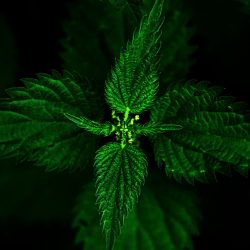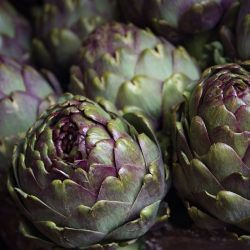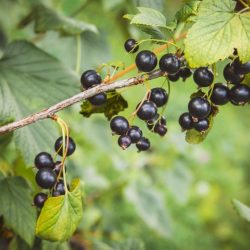The dandelion is a very common plant, impossible to ignore and full of treasures. A headache for botanists, there are no fewer than 60 species groups and over 1200 species in total (in Europe alone). The dandelion is widespread in most temperate zones of the northern hemisphere (Europe, North America, North Africa, China, India, Iran, etc.), which is where it was originally grown.
What is dandelion?
Dandelion(Taraxacum officinale), also known as “lion’s tooth” or ” dog’s lettuce”, belongs to the Asteraceae family. This perennial plant has distinctive yellow flowers and grows in meadows and on embankments. Used in phytotherapy, it acts as a mild choleretic, diuretic and bitter appetite stimulant. It is used to treat hepatopathy, cholecystopathy and digestive disorders such as flatulence and bloating.
In traditional medicine, dandelion is used as a mild depurative and laxative, and treats gout and rheumatic diseases. The root, leaf and aerial parts are recognised in the French pharmacopoeia. It thrives in damp meadows and fields, typical of Europe.
Botanically, the dandelion is a perennial herb, flowering from April to September. Its dark brown to black roots are longitudinally wrinkled. The rosette-shaped leaves are lanceolate and lobed. The yellow flower heads are borne on a fistulous scape. The fruit is an achene surmounted by a pappus (white aigrette) which helps it to be dispersed by the wind.
The dandelion root, harvested in February or autumn, is of major therapeutic interest, especially for its diuretic effect due to its potassium salts and flavonoids. Its varied chemical composition includes sugars, sesquiterpene lactones, triterpenes, sterols, phenolic compounds, flavonoids, phenolic acids, coumarins and carotenoids.
In addition to its medicinal uses, dandelion has traditional applications as a treatment for constipation, osteoarthritis and improving appetite and complexion. The dried root was used as a coffee substitute, and the flower wine was appreciated as a general tonic.
A little history
What are the main pharmacological properties of Dandelion root?
Stimulates secretion/excretion functions
Known for its many benefits, dandelion plays an important role in liver and kidney functions.
At liver and biliary level, it acts as a choleretic and cholagogue, stimulating the secretion and evacuation of bile, useful in liver and gall bladder disorders. It is also effective in preventing biliary lithiasis.
At kidney level, it has a notable diuretic action, comparable to furosemide. Its high potassium and inulin content contributes to this function, without causing any loss of potassium, unlike other diuretics. This makes it useful against urinary tract infections.
Although scientific studies are limited, research has confirmed certain beneficial effects of dandelion, including its anti-inflammatory effect, increased urine elimination and bile production.
Dandelion is often recommended in detox cures, thanks to its multiple effects:
- Diuretic effect: Increases urinary frequency and volume.
- Depurative action: Helps eliminate waste and toxins.
- Draining action: Combats water retention.
- Choleretic effect: Facilitates the secretion of bile by the liver.
- Cholagogue action: Encourages the evacuation of bile to the intestine.
In this way, dandelion supports the body as a whole, helping to maintain the balance and health of the liver and kidneys.
Digestive properties
Dandelion has significant beneficial liver properties, acting on several levels.
Dandelion significantly stimulates phase 2 liver detoxification, inducing the enzyme UDP-glucoronosyl transferase (244%). It reduces the activity of the CYP1A2 and CYP2E enzymes in phase 1, without affecting CYP2D and CYP3A. Studies have shown the effectiveness of dandelion polysaccharide fractions in protecting the liver, particularly against the effects of carbon tetrachloride.
Historically, bitter plants such as dandelion stimulate digestion and appetite. Sesquiterpene lactones increase digestive secretions, particularly pancreatic secretions. The inulin and high potassium content of dandelion have a prebiotic effect and help improve constipation and diarrhoea.
Dandelion is also rich in minerals (iron, calcium, copper, silica, manganese), vitamins (B, C, D, K), flavonoids and carotenoids. Its root contains bitter principles,inulin and complex sugars, which promote beneficial intestinal bacteria. It also contains fatty acids and choline, which are essential for the liver. Dandelion is a eupeptic plant, aiding digestion and combating digestive disorders. Its mild laxative action speeds up intestinal transit.
Dandelion flowers have depurative properties, helping with constipation, difficult digestion, excess cholesterol and inappetence. It stimulates and soothes the liver, helping with liver and gall bladder problems.
Metabolic properties
Dandelion is a plant with many beneficial properties, including antioxidant, lipid-lowering, anti-diabetic, anti-coagulant and anti-inflammatory properties.
In terms of antioxidant and lipid-lowering activity, studies have shown that treatment with dandelion roots and leaves improves plasma antioxidant enzyme activities and lipid profiles, particularly in hypercholesterolaemic subjects. These effects indicate a potential protective effect against atherosclerosis and oxidative stress.
As for its anti-diabetic and anti-coagulant properties, dandelion contains compounds such as chicoric acid, taraxastenol,chlorogenic acid and sesquiterpene lactones. Although promising, these properties require further research to be fully understood and validated.
The anti-inflammatory action of dandelion is also noteworthy. Alcoholic and aqueous extracts of the plant inhibit nitric oxide (NO) production and the expression of inducible NO synthase (iNOS) and cyclooxygenase-2 (COX-2) in vitro. Ex vivo and in vivo studies have revealed a reduction in NO and lymphocyte levels, as well as anti-angiogenic and antioxidant activity, largely thanks to taraxasterol.
A literature review published in 2006 highlighted that data obtained from cellular and animal models confirm the antioxidant, anti-cancer and anti-diabetic effects of dandelion. In addition, some preliminary clinical trials indicate that preparations containing dandelion may be beneficial against intestinal cramps, constipation and diarrhoea.
With regard to rheumatic diseases, several studies suggest that dandelion may help relieve pain, particularly during a gout attack.
Other properties
A plant with multiple benefits, dandelion has important immunostimulant and haematological properties, as well as other beneficial effects on health.
With regard to immunostimulant and haematological properties, research has shown that dandelion extracts, in particular taraxinic acid β-D-glucoside obtained by extraction with ethyl acetate, promote neutrophil migration, splenic lymphocyte proliferation and phagocytosis in vitro. In vivo, dandelion extract is antianaemic, increasing the number of red blood cells and haemoglobin levels.
Beyond these aspects, dandelion also has anti-tumour properties, potentially helping to combat the development of cancer cells thanks to its anti-angiogenic and anti-carcinogenic effects. Its anti-infectious properties may help fight infections, while its antidepressant and neuropsychic effects could have a positive impact on mental and emotional health.
In terms of managing overweight and obesity, some studies suggest that dandelion may inhibit pancreatic lipase activity, offering a potential route to weight control. Skin conditions also benefit from the positive effects of dandelion. Its active compounds have shown promising results in improving skin condition, combating cellulite and certain forms of eczema.
Are there any precautions to be taken when using Dandelion?
Dandelion is a plant with many therapeutic virtues, but it does have some contraindications and should be used with caution.
It should not be used in cases of obstruction of the bile ducts. It is also contraindicated in the presence of cholangitis. Patients suffering from liver disease should avoid this treatment. People with symptomatic gallstones should not use it, except under strict medical supervision. Dandelion is also not recommended in cases of active peptic ulcer. In addition, its use is prohibited in various other biliary diseases.
According to the European Medicines Agency (EMA), it is not recommended for pregnant or breast-feeding women. Similarly, it is not recommended for use in children under the age of 12. This recommendation is due to a lack of data guaranteeing the safety of its use in these populations.
As regards precautions for use, it is essential to ensure adequate fluid intake during treatment to increase urine production. Medical supervision is recommended in cases of symptomatic ureteral and gallstones. As a diuretic plant, dandelion should not be used during an attack of renal colic. Caution should also be exercised in cases of renal insufficiency,heart failure or diabetes, due to the theoretical risk of hyperkalaemia.
Possible side effects include heartburn, nausea, inflammation of the bile du cts and excess potassium in the blood, particularly in people with kidney or heart failure or uncontrolled diabetes. Dandelion latex can cause skin allergies. For diabetics, its hypoglycaemic properties may interfere with their treatment.
In terms of drug interactions, dandelion may interact with diuretics, anti-diabetic and gastro-oesophageal reflux medication, anticoagulants and lithium-containing drugs.
How should Dandelion be taken and at what dosage?
Dandelion is available in various forms, including dried plants, capsules containing dried plant powder, and liquid extracts. Dosage varies according to the type of dandelion extract used:
- As a dietary supplement, in the form of integral totum powder in capsules.
- Standardised fresh plant fluid extract: 5 to 10 ml per day in water.
- Integral suspension of fresh plant: 5 to 10 ml per day in water.
- Honey glycerine fluid extract: 5 ml 3 times a day in water.
- Hydroalcoholic extract: 20 to 40 drops 2 to 3 times a day in a glass of water.
- Decoction: 4 to 5 g of roots per cup, boil for 10 minutes, 1 cup 2 to 3 times a day.
These recommendations may vary if dandelion is combined with other natural extracts. In such cases, it is advisable to follow the dosage instructions provided on the packaging of the product concerned.
What do the health authorities think?
Although its diuretic, cholagogue and choleretic properties have been scientifically confirmed in animals, dandelion has not yet been shown to be effective in humans in clinical studies.
Dandelion is prized for its high mineral content (iron, calcium, copper, silica, manganese) and inulin, a prebiotic that promotes intestinal flora. Its high potassium content helps to compensate for the urinary losses often associated with diuretics.
The health authorities have various positions on the use of dandelion:
- The European Medicines Agency (EMA) traditionally recognises the use of dandelion leaves and root to increase the volume of urine in urinary problems and to relieve minor digestive disorders. It advises against use for longer than two weeks and in children under the age of twelve.
- The World Health Organisation (WHO ) considers dandelion to be traditionally used to stimulate urine production, facilitate the secretion and elimination of bile, increase appetite and relieve difficult digestion.
- Commission E of the German Ministry of Health recognises the traditional use of dandelion leaves as a diuretic, and of dandelion root for loss of appetite and minor digestive disorders.
- ESCOP (European Scientific Cooperation on Phytotherapy) recognises the traditional use of dandelion leaves as a diuretic to prevent urinary stone attacks and relieve rheumatism, and of dandelion root to restore liver and biliary functions, in dyspepsia and to combat loss of appetite.
Medical literature and clinical trials
- Chakuski I. et al, Treatment of chronic colitis with an herbal car combination of Taraxacum officinale; Hypericum perforatum, Melissa officinalis, Calendula officinalis and Foeniculum vulgare; Vutr Boles, 1981
- Clare B.A. et al. The Diuretic Effect in Human Subjects of an Extract of Taraxacum officinale Folium over a Single Day; J Altern Complement Med. 2009
- Hook I. & A. et al, Evaluation of Dandelion for Diuretic Activity and Variation in Potassium Content International Journal of Pharmacocognosy, 1993
- Kelly G., Inulin-type prebiotics; a review. (Part 2), Altern Med Rev, 2009
- Gonzalez-Castejon M. et al, Diverse biological activities of dandelion, Nutr Rev, 2012
- Schütz K. et al, Taraxacum. A review car on its phytochemical and pharmacological profile, Journal of Ethnopharmacology, 2006
- Jeon H.J. et al, Anti-inflammatory activity of Taraxacum officinale, Journal of Ethnopharmacology, 2008
- Kim J. et al, Characterization of immunostimulatory activities of fractions obtained from Taraxacum officinale, Planta Med, 2010
- Wirngo F.E. et al, The Physiological Effects of Dandelion (Taraxacum Officinale) in Type 2 Diabetes, Rev Diabet Stud, 2016
- Park C.M. et al. TOP1 and 2, polysaccharides from Taraxacum officinale; attenuate car CCI(4)-induced hepatic damage through the modulation of NF-kappaB and its regulatory mediators; Food Chem. Toxicol, 2010







